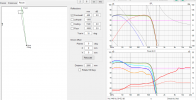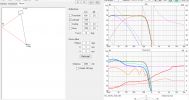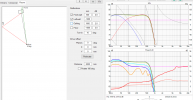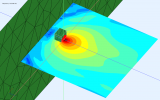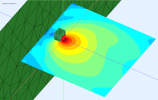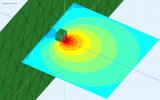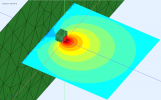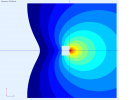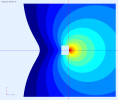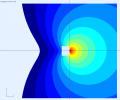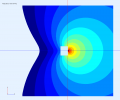Cardioid directivity speakers work
specifically better than normal speakers when we consider the wall behind them. The high-bass and low mids, which cause the most issues because of SBIR, are reduced to the rear thanks to the cardioid, while low-bass wavelength are long enough so that their reflections constructively add with the direct signal when the speakers are close to the wall. Since low bass is increased that way, we just have to slightly reduce it with a low shelf thanks to the DSP. Because bass boost will depend on the speaker to wall distance, the DSP takes that info into consideration when adjusting the low shelf.
Free bass from boundary reinforcement, less distortion, and no front wall low-mid comb filtering. D&D8C and Kii three are engineered to that very purpose.
Below is an animation from Kii Audio showing the benefit from having the cardioid directivity with regards to the front wall reflection. On the two left animations we have a normal, monopole audio source. On the right we have a cardioid one. On top the speakers are in free field, on the bottom there is a wall right behind them. On the monopole we see a strong rear wall reflection, and not with the cardioid.



